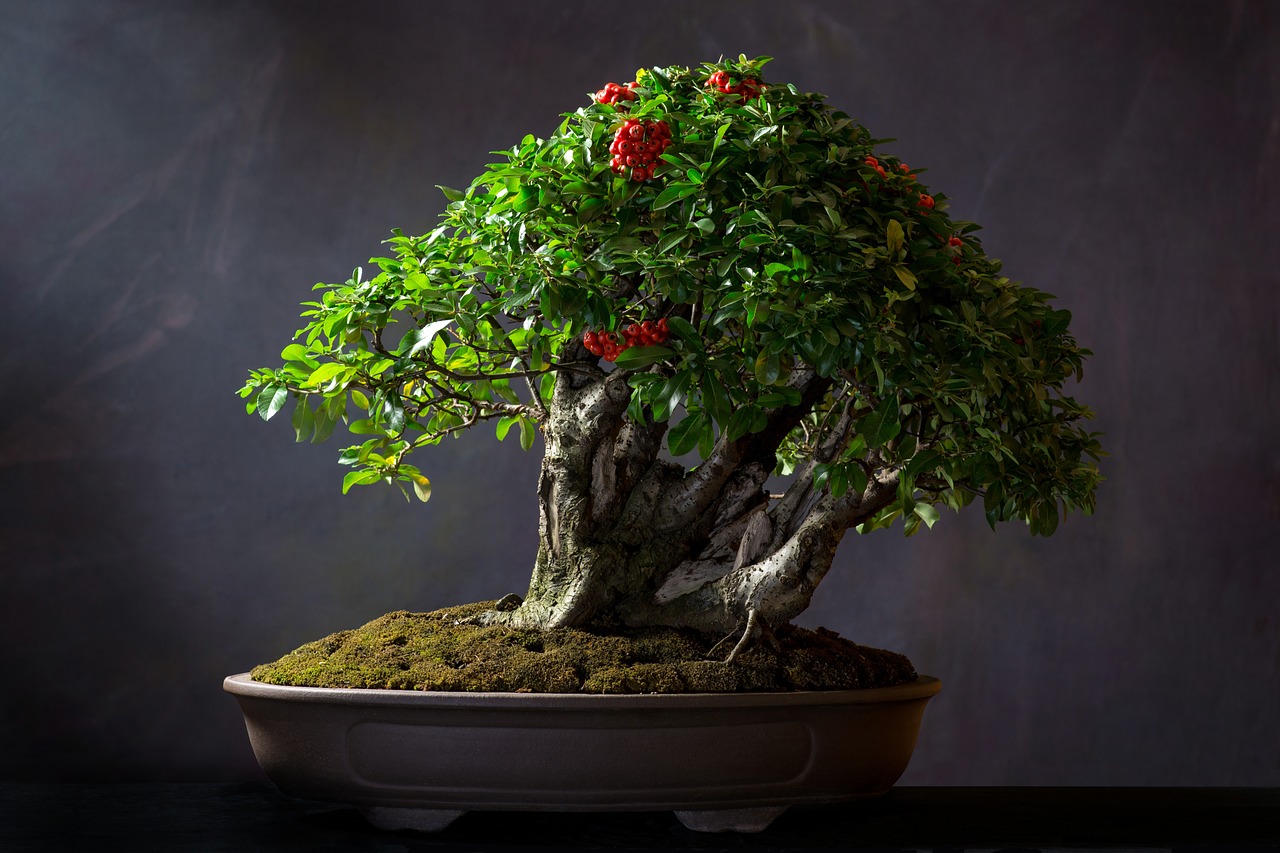 Pin
Pin Image by Sasin Tipchai from Pixabay
It’s hard to miss how Japanese culture is slowly becoming part of daily life in Indian cities. From ramen joints popping up in Bengaluru and Delhi to anime-themed cafes and cosplay events in Mumbai, this trend is no longer niche. The younger Indian crowd especially can’t get enough of it. Social media is packed with reels about “aesthetic Japanese mornings,” J-pop playlists, and how-to videos on bento box lunches. What was once just curiosity is now growing into full-blown cultural appreciation—or some would say, obsession.
It’s not just about the food or shows; it’s a lifestyle shift. Minimalist home designs inspired by Japan, tea ceremonies, language learning apps, and even work culture discussions from Japanese corporates are gaining attention. And this isn’t just in metro cities—Tier 2 cities are catching on quickly. Indians are connecting with the discipline, design, and deep-rooted values of Japanese culture in a way that feels fresh but relatable.
Table of Contents
Anime and Manga: The Gateway to Japanese Culture
For many Indians, anime and manga are the first touchpoints with Japanese culture. What started as weekend cartoon watching has evolved into a passionate subculture. Shows like Naruto, Attack on Titan, and Jujutsu Kaisen have built massive fan bases. These stories aren’t just entertainment—they’ve got depth, emotion, and values that a lot of Indian viewers relate to. Concepts like friendship, loyalty, and personal growth hit home, especially with the younger crowd.
Fan communities have exploded online, with Indian YouTubers reviewing episodes, Instagram pages full of fan art, and Discord servers buzzing every time a new season drops. Manga, once rare to find, is now being sold in local bookstores and online marketplaces. Kids and teens are even learning Japanese just to read manga in its original form. This isn’t just about watching shows—anime is opening a door to a whole new world, sparking curiosity about Japanese history, food, traditions, and even philosophy.
Japanese Cuisine’s Growing Popularity in India
Japanese food is becoming a favorite among Indian urbanites. Sushi, once considered exotic, is now a common choice in cities like Delhi, Mumbai, and Bengaluru. Swiggy reports a significant increase in sushi orders, with Delhi leading the trend. The number of pan-Asian restaurants in India has surpassed 750, reflecting a growing appetite for Japanese cuisine.
The appeal lies in the freshness and balance of Japanese dishes. Ramen, tempura, and bento boxes are gaining popularity, especially among health-conscious individuals. Japanese curry, with its mild and comforting flavor, is also attracting attention. The expansion of Japanese food chains like CoCo Ichibanya into India further indicates this growing interest.
This culinary trend is more than a passing phase; it’s a reflection of India’s evolving palate and openness to global flavors. Japanese cuisine’s emphasis on quality and presentation resonates with Indian diners, making it a significant part of the country’s diverse food scene.
Japanese Fashion Aesthetics Reshaping Indian Wardrobes
Japanese fashion is making waves in India, especially among the youth. Brands like Uniqlo and Muji have found a strong foothold, offering minimalist designs that resonate with Indian consumers. Uniqlo, for instance, has expanded rapidly since its entry into the Indian market, reflecting the growing demand for Japanese-style clothing.
Beyond mainstream brands, Japanese street fashion, particularly the Harajuku style, is influencing Indian fashionistas. This eclectic mix of styles encourages self-expression and individuality, aligning well with the diverse fashion sensibilities in India.
Indian designers are also embracing Japanese techniques. For example, the brand Adheera incorporates Shibori, a traditional Japanese dyeing method, into its collections, blending Indian and Japanese aesthetics seamlessly.
The fusion of Japanese and Indian fashion elements is evident in the popularity of oversized silhouettes, neutral color palettes, and functional designs among Indian consumers. This cross-cultural exchange is not just a trend but signifies a deeper appreciation and integration of Japanese fashion principles into Indian wardrobes.
Japanese Language Learning Boom in India: A Career Game-Changer
In recent years, there’s been a significant surge in Indians learning Japanese, driven by both cultural interests and career prospects. As of 2021, over 36,000 individuals in India were studying Japanese, a notable increase from previous years . This growth is evident in cities like Pune, which has become a hub for Japanese language education, hosting numerous institutions and a significant number of Japanese language teachers.
The demand for Japanese speakers in India is fueled by the presence of Japanese companies in sectors like IT, automotive, and manufacturing. Proficiency in Japanese opens up opportunities in these industries, as companies seek individuals who can bridge language and cultural gaps. Japanese language skills are advantageous for roles in translation, interpretation, and education.
Beyond career benefits, learning Japanese also facilitates deeper engagement with Japanese culture, from anime and manga to traditional arts. This cultural connection further motivates individuals to pursue language studies, enriching their personal and professional lives.
Japanese Design Aesthetics Influencing Indian Homes
Japanese design principles, characterized by minimalism, functionality, and harmony with nature, are increasingly influencing Indian home interiors. Brands like Muji have introduced Indian consumers to the concept of ‘no-brand’ quality, offering products that emphasize simplicity and utility. Muji’s approach resonates with the Indian market, where there’s a growing appreciation for clutter-free and sustainable living spaces.
Indian homeowners are adopting elements of Japanese interior design, such as neutral color palettes, natural materials, and open spaces that promote tranquility. This shift is evident in the popularity of tatami mats, shoji screens, and low furniture, which align with the Indian preference for floor seating and multifunctional spaces. The integration of indoor plants and natural light further enhances the serene ambiance, reflecting the Japanese philosophy of bringing the outside in.
The influence extends beyond aesthetics; it encompasses a lifestyle that values mindfulness and intentional living. Indian consumers are increasingly drawn to the Japanese concept of ‘Ma’—the space between objects—which encourages thoughtful placement and appreciation of emptiness as a design element. This cultural exchange is fostering a new wave of interior design in India, where Japanese minimalism meets Indian sensibilities, creating harmonious and functional living environments.
Japanese Minimalism and Japandi Style Transforming Indian Interiors
Japanese minimalism, characterized by simplicity, functionality, and harmony with nature, is increasingly influencing Indian interior design. Brands like Muji have introduced Indian consumers to this aesthetic, emphasizing clean lines, neutral colors, and natural materials. Muji’s philosophy of ‘no-brand’ quality goods resonates with those seeking clutter-free and sustainable living spaces.
A notable evolution of this trend is the emergence of the Japandi style, a fusion of Japanese minimalism and Scandinavian functionality. This design approach combines the warmth of Scandinavian design with the elegance of Japanese aesthetics, resulting in spaces that are both cozy and serene. In India, designers are adopting Japandi by integrating natural textures, muted color palettes, and minimalist furniture, creating interiors that reflect a balance between form and function.
Indian homes are embracing this blend by incorporating elements like handwoven textiles, wooden furniture, and antique brass accessories into minimalist settings. This fusion not only enhances the visual appeal but also aligns with a lifestyle that values mindfulness and intentional living. As a result, Japanese minimalism and Japandi style are redefining Indian interiors, offering a fresh perspective on modern living.
Cultural Festivals and Events Bridging India and Japan
Cultural festivals like Japan Habba in Bengaluru have become pivotal in strengthening India-Japan relations. Initiated in 2005, Japan Habba has evolved into a significant annual event, attracting thousands of attendees. The 2025 edition witnessed a footfall of 15,000 people, featuring diverse programs such as karaoke contests, group dances, and exhibitions on Japanese calligraphy and origami. The event also introduced an expo divided into segments representing different regions of Japan, enhancing the cultural experience for visitors.
These festivals offer a platform for cultural exchange, allowing participants to engage in activities like wearing traditional Japanese attire (Yukata), experiencing tea ceremonies, and exploring Japanese culinary delights. Such events not only foster mutual appreciation but also provide opportunities for Indian students and enthusiasts to immerse themselves in Japanese culture. The inclusion of anime-manga and cosplay segments in recent editions reflects the growing influence of Japanese pop culture in India.
Beyond entertainment, these cultural events serve as educational platforms, promoting language learning and understanding of Japanese traditions. They also facilitate networking opportunities for businesses and educational institutions, paving the way for collaborations and exchanges. As India continues to embrace Japanese culture, festivals like Japan Habba play a crucial role in nurturing this cross-cultural relationship.
Japanese Pop Culture's Influence on Indian Youth
Japanese pop culture, particularly anime and manga, has become a significant influence on Indian youth. Shows like Naruto, Attack on Titan, and Demon Slayer have garnered massive followings, with fans engaging in cosplay, fan art, and online discussions. This cultural phenomenon has led to the establishment of anime clubs, conventions, and online communities across India, fostering a vibrant subculture.
The impact extends beyond entertainment; it has influenced fashion, language, and lifestyle choices. For instance, Japanese fashion trends, such as Harajuku style, have inspired Indian youth to experiment with bold and eclectic clothing choices. Similarly, Japanese phrases and expressions have found their way into everyday conversations, reflecting the deep integration of Japanese pop culture into Indian society.
This cultural exchange has also led to collaborations between Indian and Japanese creators, resulting in anime series with Indian themes and settings. Such initiatives highlight the growing synergy between the two cultures, paving the way for more collaborative projects in the future.
Japanese Influence in Indian Cinema and Animation
Japanese culture has significantly influenced Indian cinema and animation, fostering a unique blend of storytelling and artistic expression. The collaboration between Indian and Japanese filmmakers has led to the creation of culturally rich and visually captivating films.
One notable example is the co-production of the animated film Ramayana: The Legend of Prince Rama, which was a joint effort between India and Japan. This film showcases the fusion of Indian mythology with Japanese animation techniques, resulting in a product that resonates with audiences from both cultures. Such collaborations have paved the way for more cross-cultural projects, enriching the cinematic landscapes of both nations.
Japanese animation, or anime, has found a dedicated audience in India. Series like Doraemon, Naruto, and Dragon Ball Z have been dubbed in various Indian languages and broadcasted on television, captivating young viewers. The storytelling style, character development, and moral lessons presented in anime have contributed to its popularity among Indian audiences.
The influence extends beyond television; Japanese animation studios have collaborated with Indian artists and animators, leading to the creation of original content that blends Japanese animation styles with Indian narratives. This fusion has resulted in a new genre of animation that appeals to a global audience, showcasing the potential of cross-cultural collaboration in the entertainment industry.
How and Where to Learn Japanese in India
Learning Japanese in India has become increasingly popular due to the rise of Japanese pop culture, career opportunities in Japanese companies, and the general fascination with the culture. Whether you’re a student looking to pursue higher education in Japan or an enthusiast wanting to understand anime and manga better, there are many ways to learn the language. Here’s a guide to help you get started on your Japanese language journey.
1. Japanese Language Classes and Institutes in India
For those who prefer structured learning with expert guidance, enrolling in a language institute is an ideal option. Several well-known institutes across India offer Japanese courses, from beginner to advanced levels. Some of the top choices include:
- The Japan Foundation: With centers in cities like Delhi, Mumbai, and Chennai, the Japan Foundation is one of the most prominent organizations offering quality Japanese language courses. They provide both short-term and long-term programs.
- Inlingua: Available in major cities like New Delhi and Bangalore, Inlingua offers Japanese courses at different proficiency levels. The curriculum is designed to enhance speaking, reading, and writing skills.
- LingoAce: Known for its focus on conversational skills, LingoAce also provides flexible online learning, allowing students to learn at their own pace.
Many universities also offer Japanese as part of their curriculum. For example, Jawaharlal Nehru University (JNU) and Delhi University have dedicated departments for Japanese studies, offering language courses along with cultural immersion programs.
2. Online Platforms for Learning Japanese
In the digital age, online resources provide a flexible and convenient way to learn Japanese. These platforms offer a range of learning methods, from beginner lessons to advanced grammar and kanji writing. Some popular options include:
- Duolingo: An easy-to-use app that gamifies the learning process, Duolingo is perfect for beginners. It covers basic vocabulary, grammar, and sentence structure.
- Rosetta Stone: Known for its immersive approach, Rosetta Stone helps learners build their language skills through context and repetition.
- BunPro: This platform specializes in Japanese grammar, with lessons structured around JLPT (Japanese Language Proficiency Test) levels.
- WaniKani: If you’re looking to master kanji, WaniKani uses mnemonic-based learning to help you remember characters efficiently.
These platforms can be used in combination with traditional classes for a more comprehensive learning experience.
3. Mobile Apps for Japanese Learning
Learning Japanese on the go is easier than ever thanks to a variety of mobile apps. Whether you’re on a commute or just have a few free minutes, these apps offer quick and effective lessons to help reinforce your language skills:
- HelloTalk: A language exchange app that connects you with native Japanese speakers, HelloTalk lets you practice speaking and writing while also helping others learn your native language.
- Anki: This flashcard app is particularly popular for memorizing kanji and vocabulary. You can create custom flashcard decks or download pre-made ones from other learners.
- LingoDeer: Unlike many other apps, LingoDeer is designed specifically for Asian languages. It provides a structured approach to learning Japanese, focusing on sentence structure and grammar rules.
4. Tips for Learning Japanese Effectively
Learning Japanese can be challenging, but with the right mindset and approach, you can make steady progress. Here are a few tips to ensure success:
- Consistency is Key: Even dedicating just 15-30 minutes each day can significantly improve your language skills over time. Consistency helps retain what you learn and builds momentum.
- Immerse Yourself: Surround yourself with Japanese content. Watch anime, listen to Japanese music, or read manga. This helps improve your listening skills and reinforces vocabulary.
- Practice Speaking: Use language exchange apps like HelloTalk to talk with native speakers. Speaking regularly is crucial for developing fluency and understanding pronunciation nuances.
FAQs
The rising interest in Japanese culture in India can be attributed to the growing influence of anime and manga, the popularity of Japanese cuisine, and the increasing number of Japanese brands entering the Indian market. Additionally, cultural exchanges through festivals, media, and social media have also played a significant role in deepening this connection.
Yes, Japanese cuisine, particularly sushi, ramen, and bento, has seen a sharp increase in popularity in India. Restaurants specializing in Japanese food are popping up in metro cities, and even small towns are beginning to embrace Japanese dining experiences due to the cuisine’s unique flavors and health-conscious appeal.
Japanese pop culture, especially anime and manga, has captured the imagination of Indian youth. This influence extends beyond watching shows to fashion, language, and lifestyle choices. Fans participate in cosplay events, follow Japanese fashion trends, and even learn Japanese to better understand the culture behind their favorite media.
Cultural festivals like Japan Habba in Bengaluru provide a platform for people to experience Japanese traditions, from tea ceremonies to cosplay events. These festivals not only showcase Japan’s rich culture but also promote mutual understanding, language learning, and provide networking opportunities for those interested in Japanese culture.
With more Japanese companies operating in India and the growing fan base for Japanese pop culture, many Indians are learning the Japanese language. This demand is also fueled by career opportunities in translation, interpretation, and roles with Japanese companies. Language institutes and online platforms offering Japanese courses have seen a rise in enrolments, particularly among students and young professionals.
































